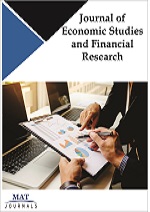Is the Female Labor Force in Bangladesh Following the Feminization U-shaped Hypothesis? An FM-OLS Approach
Keywords:
Economic development, Female Labor Force Participation Rates (FLFPR), Fertility rate, Fully Modified-Ordinary Least Squares (FM-OLS), UnemploymentAbstract
Female labor force participation rate in Bangladesh has increased dramatically, especially in rural areas. This indicates that an increasing number of women have access to employment opportunities, enabling them to contribute to the country’s economic development. However, their financial contribution still needs to be improved. This study analyzes the impact of economic progress within the framework of the U-shaped hypothesis from 1991 to 2022, utilizing the FM-OLS technique. The findings reveal that the feminization U-shaped hypothesis holds in Bangladesh, with a turning point 2.4. Other factors, such as unemployment and urbanization, produced the expected results, while the fertility rate showed the opposite outcome. In response to these dynamics, the Government of Bangladesh and Bangladesh Bank have implemented several important initiatives to enhance women's access to employment opportunities further and support their contribution to the nation's economic growth.




